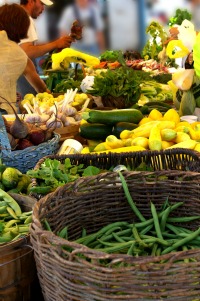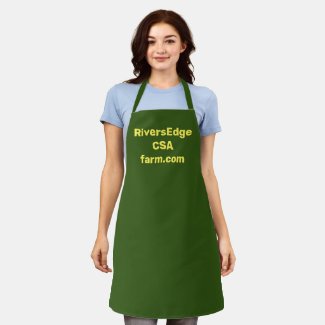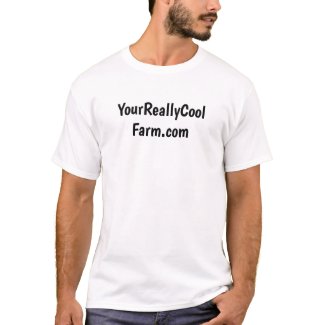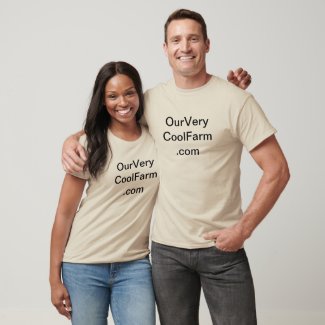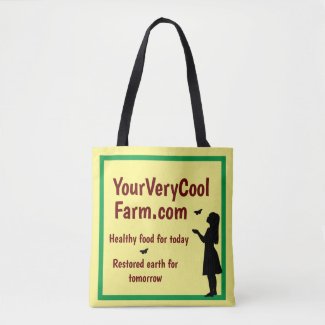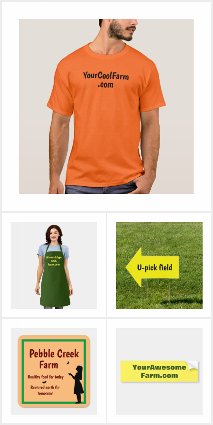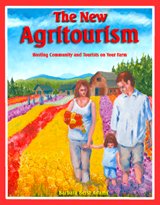Start a farmers market or roadside stand
by Amy Rose
Copyright National Lilac Publishing, LLC
Farmers market, roadside stand, on-farm store... Want to start one? Let's jump right in.
Roadside stands are usually considered a market outlet at the edge of
just one farm. Whereas farmers markets are more often a group of
farmers gathered under temporary or permanent shelter in a more public place.
But a roadside stand can expand into an entire on-farm store as what happened with the farmer described in the book "Micro Eco-Farming" who started by putting out a little left-over corn and cucumbers from the family garden, and ended up grossing $200,000 a year after building an on-farm store with baked items and other value-added products. Roadside stand owners also sometimes collaborate with other farmers in rural areas, turning them more into rural farmers markets.
Building structures for farmers markets, on-farm stores and roadside stands:
Structures for on-farm stores, farmers markets or roadside stands can be unique and part of the customer draw.
But roadside stand structures can be as simple as a card table or the kids' wagon if the amount of items for sale is small, and it's set up only during warm, relatively wind-free weather. If you want to build more of an on-farm store, or a permanent attractive roadside stand that advertises to passersby all year even when not in use, consider a wooden building with character and interest.
Farmers markets
are sometimes affairs where each vendor sets up his or her own temporary
structure. Along with each farmer's stall or booth, picnic tables and other gathering places can greatly
benefit a farmers market's customer draw. UCDavis has an excellent free PDF here on starting a new farmers market, which may also give ideas on improving existing ones
Tips to start a farmers market, roadside stand or on-farm store:
- The USDA Agricultural Marketing Service (www.ams.usda.gov)
has pdfs and other forms of information on farmers markets and local
food marketing. Type in "roadside stand," or "farmers market" or similar
phrases in the search bar on their home page.
Resources for finding farmers market regulations at the state, county and city levels:
- Most states have a farmers market association one can search for online.
- Farmers and vendors can also search their state’s Department of Agriculture website for state codes regarding farmers markets.
- The state and local Department of Health must be contacted for a description of their rules, as they regulate value-added and prepared foods at markets, including conducting inspections.
-
Local cooperative extensions can be helpful in understanding
regulations and pointing to local resources.
- A growing number of areas now have unique local non-profits engaged in sustainable agriculture and developing local food systems. Ask around, and keep an eye out for them at food co-ops or other local areas of shared interest in the locavore movement.
- Search for
"cottage food laws" in your state. As an example, here's the one for
Minnesota:
https://www.mda.state.mn.us/food-feed/cottage-food-producer-registration
-----
Tips to operate a farmers market:
Signs with prices: Customers can be shy about asking a price, and if no prices are in sight, will sometimes move on instead of buying rather than taking the time to ask an awkward question. Vendors with clear signs that give name, price, as well as a little bit of description create a more customer-friendly atmosphere.
Shallow displays versus deep displays: This tip comes from Linda Chapman of Harvest Moon Farm in Spencer, Indiana. When displays are shallow and parallel to the customers' walking path, customers feel safer approaching the stands. This way, they don't have to walk into narrow aisles off their path.
Freebies for children: Handing out free cherry tomatoes, surplus bachelor buttons, goose or peacock feathers helps children (and therefore their parents) enjoy the market, as well as helps keep young hands off the saleable merchandise. Make sure all health department procedures are properly followed.
Taste samples and "loss leaders" vs. undercutting and catering to last-minute vultures: Everyone likes a bargain. But backyard farmers especially need to discover that farmers markets or a chain of roadside stands work because no one undercuts the other. A new backyard farmer can't show up late in the season and dump a load of overly cheap extra produce at the farmers market, take business away from the regulars trying to earn their living that way, and leave after receiving a quick wad of money.
Also, "bargain
hunters" sometimes purposely wait until the last moment to
buy from farmers, hoping in a desperate attempt to get rid of perishable
produce, they'll give it to them half price. But, farmers markets and even roadside stand owners can
satisfy the desire for bargains by offering free taste samples instead as what was mentioned above about children. Free taste samples don't reward vulturism and don't cause such a financial loss to the farmer. The farmer can choose his or herself what freebies wouldn't be a financial burden, such as slices from a bumpercrop of lemon cucumbers. Non-edibles, also, such as recipe cards, can be given out.
They can also try using loss leaders. This is when stores offer an item at an especially low price, knowing they'll lose money on that particular item, just to attract customers to come in and inevitably buy other products at full (or inflated) prices at the same time. Farmers can agree ahead of time on loss-leader items that are a low and equal risk for all, or ask each farmer to provide one per week that does not compete with other vendors' regular prices, never allowing just one vendor to always be the cheap one of the pack.
Friendly farmers: Tony Manetta, director of Greenmarket in New York, has expressed that the actual farmers are one of the biggest draws for the market, and that sales always increase when the farmers, rather than their employees, are present at the market. Friendly contact with farmers can make the difference between a customer stopping off at the supermarket, or returning next Saturday for field-fresh lettuce. If farmers don't like people - that's okay, but they need to find another outlet to sell through. One rude vendor can cast a dark cloud over an entire market. These gathering places of farmers and customers are considered one of the greatest public relations programs for agriculture.
Diversity: Many choices among vendors will bring a greater number of different customers with different needs to the market. Unusual items, new introductions, along with familiar staples customers can count on make a very good mix. A regular supply of organic, vine-ripened tomatoes and ongoing supplies of lettuce and greens complement such hard-to-find products as fresh trout and just-picked gourmet mushrooms. There are exceptions, especially for roadside stands, such as small honey or cut-flower stands that people come to expect to buy only one type of specific item.
Promote sustainable/regenerative
agriculture: The rise in farmers markets paralleled several other areas of growth, including strengthening local economies, health consciousness, and environmental concerns. Farmers markets
are a good place for posters or brochures describing the methods
and benefits of organic farming. This educates as it adds to the
appeal of being at the market, reminding citizens that they are
contributing to the greater good. Consider political sensitivity though, and know the difference between pushing an agenda and making customers feel they're part of a solution. Note specific language of your demographic. For example, one demographic may relate more to terms such as restoring America's rural communities, whereas another one may relate more to the idea of solving climate change. Consider how you'll communicate your sustainable and regenerative practices. You may even choose to find common ground terms almost all can relate to, such as protecting America's natural resources.
Product networking among vendors/farmers: The University of California Small Farm Center promoted local farms by creating holiday gift baskets which included products from 15 farms and a brochure describing the farms. Participating farmers were thrilled with the success, and all of the baskets sold. Such products create a further sense of cooperation and unity, create another outlet for farmers' products, and promote the farmers and their market at the same time.
Promotional extras: Free promotion through a well-timed press release is invaluable. So is word-of-mouth promotion that comes about when customers leave the market with a sense of goodwill. If the market is small, informal and utilizes volunteers, one successful method is to have each vendor choose a month and volunteer an 'extra job,' such as writing a press release for the entire market, organizing a cooking demonstration, or printing up recipe cards that include items from all vendors rather than from just their own products.
Careful, though... this can backfire. For some venders, the market is already stretching their time away from farm and family. When one or two do-gooders in the group with lots of surplus time decide to force everyone else to volunteer more than they thought they were signing up for, (this is known as being "volun-told"), it can cause resentment.
If the market is larger and can hire a director, larger undertakings, such as a farmers market exclusive cookbook or ongoing contact with the press can turn a quiet market into 'the place to be on Saturday.'
Market events: Special events, especially those put on in conjunction with the harvest of local produce or locally celebrated holidays, will attract more customers and more media attention. Here's a list of some successful events put on by farmers markets around North America:
- An opening day if the market is not year-round. In Bellingham, Washington, a bagpipe band marches around the grounds, the mayor does the "cabbage toss" and fresh cut tulips (a signature crop of nearby farmers) mark the event.
- Mothers' Day. Vendors are encouraged to create Mothers' Day specials of flowers, garden gifts, hanging baskets, and other value-added products.
- Strawberry (or blueberry or other berry) Festival with special booths for shortcake.
- Local entertainment. Scheduling local entertainment will attract more customers, including the musician's own families. The Davis, California market regularly schedules local talent, such as the youth Suzuki strings group, local school bands and the civic choir.
- Pancake breakfast.
In the small town market of St. Mary's, Ontario, the vendors and
board put on a pancake breakfast each month to encourage regulars
to return and to attract new customers. The breakfast is made special
by using homemade pancake batter, real Canadian maple syrup, and fruit that
is in season. Once again, know your community and adapt the menu. Some places have very few people who want to start their day with too many carbs, but would love a fresh fruit only brunch or a protein breakfast bbq.
- Chalk Art/Kids' Day. In conjunction with a local arts association, Bellingham, Washington's farmer's market hands out awards for the sidewalk chalk art produced by local citizens, and allows local kids to rent space to sell their wares.
- Salmon/Corn Festival. A very popular salmon barbecue cooked and served by market vendors is put on by a US maritime farmers market.
- August Peak Season. Markets that offer this find creative ways to sell surplus fresh produce, whether it be with canning demonstrations or free salsa recipes.
- Fall Harvest Festival. Popular at markets across the country, customers are drawn to pumpkin carving demonstrations, creative scarecrow contests, fresh-pressed apple cider, ornamental gourds, multi-colored corn and pumpkins that local farmers have been aiming to harvest for this day. One market has expert pumpkin carvers available to carve customers' pumpkins for a donation, which is given to a local women's shelter.
- November Food Drive. Canned foods are collected at the market by volunteers for local food banks, creating a sense of community spirit and goodwill.
- Closing. A
last market day of the season can be enhanced by emphasizing winter
storage crops such as squash, honey, preserves and Christmas gifts.
Fair fees: Fees for vendors at markets vary greatly, depending partly on the size of the market and the number of people drawn to it on a regular basis. But some market directors feel that the percentage fee is the fairest, as well as the best for the overall health of the market. As long as the percentage is reasonable and there is perhaps a minimum fee (to keep extra garden produce from being dumped at cheap prices next to the serious growers) the percentage system can create a wider variety of produce. This helps assure the diversity necessary mentioned above. The larger producers provide familiar staples, and the smaller growers can participate with unusual specialties without paying as high of a fee.
Watch
this closely, though. Make sure smaller vendors attract potential
customers that benefit all the vendors. Otherwise, the highest paying
vendors will resent the smaller ones paying a low fee, but who may be
there less to sell anything and more to promote other products and
services they sell elsewhere instead of at the market. In otherwords,
using the farmers market as a very low-cost promotional venue, cashing
in on the customers the other staple farmers paying a higher fee have
helped to draw in and maintain.
A collective website: A website containing such links as a directory of vendors, recipes for seasonal eating, parking map, directions and calendar of events is proving beneficial to more and more farmers markets.
Remember the most important product customers shop for: Fresh-picked, local, vine and tree-ripened produce grown by the vendor. While some markets add a small percentage of permanent craft and entertainment booths, the feel of a farmers market is still usually maintained. This can be done through independent market rules that designate only a certain percentage of booths be non-farm related and that all (or a certain percentage of) vendors must grow their own. Or, markets can have formal certification such as in California, where certified markets assure genuine farmers sell their crops directly to the public. These markets are approved by the county agricultural commissioner guaranteeing that certified farmers offer for sale only those agricultural products they grow themselves.
See also our articles on how farmers find ways to fully protect and insure their farm businesses with sometimes very low (or even free) yearly insurance costs:


